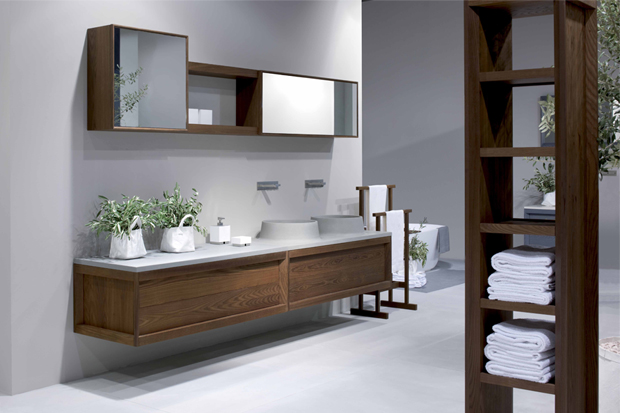Hotel bathrooms have arguably become one of the most marketable parts of the hospitality experience, and as a result the pressure to raise the bar on functionality and aesthetics is paramount. In light of this, Ian Dutch, head of hotel contracts at C.P. Hart, talks to Hospitality Interiors about some of the predominant bathroom trends for 2014…
The bathroom becomes a dressing room
The all-important vanity unit typically forms the centrepiece of the hotel bathroom, and should blend decorative and functional furniture elements to avoid a clinical finish, ensuring the room becomes a living and breathing space in its own right.
Large decadent vanity units that function as a dressing area for beauty treatments are also a key ingredient as they’ve become increasingly decorative in style and work as an extension of the bedroom.
Vanity units are being accentuated with strategic eye-level lighting to enchance the experience and create a flattering effect. Mirrored cabinetry around the dressing area is multifunctional, offering 360° visual views through intelligent mirror placement, built-in shaver sockets and strategic internal shelving and storage for complete usability.
Materials and finishes
Bathroom furniture pieces are being treated as design pieces in their own right, showcasing the beauty of wood or drawing upon contemporary new materials. Textured furniture pieces are being stripped back to their wood form; a natural aesthetic has emerged as manufacturers celebrate the natural beauty of wood through distinctive grain finishes.
Gloss is becoming less prominent with Kerlite taking centre stage; this modern material delivers a matt, almost stone-like finish and works well on a wide range of bathroom furniture.
Tactile textures are being specified more. We are seeing the use of offering a mix of darker slatted woods showing the grain of the raw wood, giving a space warmth and tactility.
Textured concrete surfaces show how manufacturers are focusing on the sense of touch, giving designers the opportunity to play with the contrasting feel of surfaces. Tile surfaces have moved from 2D to 3D, with bas-relief used to create a sense of depth. Geometric patterns rather than colour provide additional drama.
Statement pieces
Decorative bowls and brassware are becoming increasingly popular in the bathroom as small no longer means insignificant. Statement basins such as hand-blown lead crystal basins fuse Italian artisan craftsmanship with beautiful contemporary design.
When it comes to brassware, we are seeing graceful statement pieces that show an instinctive appreciation of the beauty of flowing water. Brassware in a gold or nickel material is being specified more and more at the top end of the market, and feature walls using gold leaf or metallic materials deliver a truly luxurious finish. Marble is being used as a form of wall art, applied alongside clean white sanitaryware and neutral walls.
Integrated technology
The bathroom is beginning to meet the needs of our technology-driven culture, creating a more livable space that strikes the right balance between design and experience. Digital showers emerged onto the market with button controls, but are now starting to feature simple touch screen controls that control the lighting, scents, varying water temperatures and pressures.
And whilst digital showers are leading the way, the rest of the bathroom is quickly catching up. Brassware is moving into a more digital realm, with manufacturers starting to incorporate technology in the form of a digital screen interface that controls flow and temperature. Baths will be able to be filled using a smart phone or tablet, and home spa elements are becoming more accessible and fit for purpose in the modern home as steam starts to be integrated into the shower enclosure.
C.P. Hart Contracts works for architects, interior designers and builders on building and refurbishment projects, from luxury apartments through to hotels and commercial developments.



